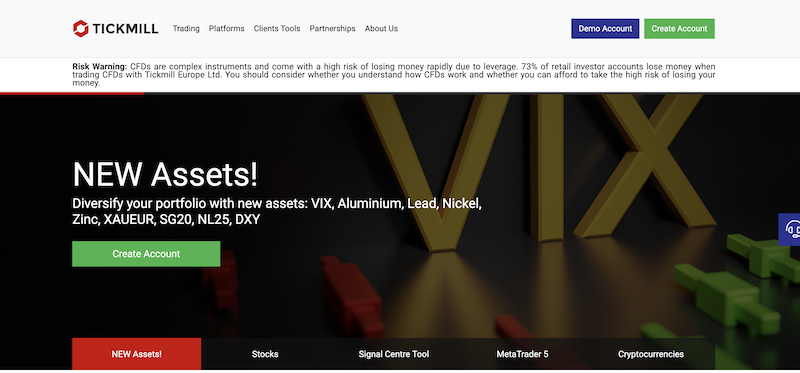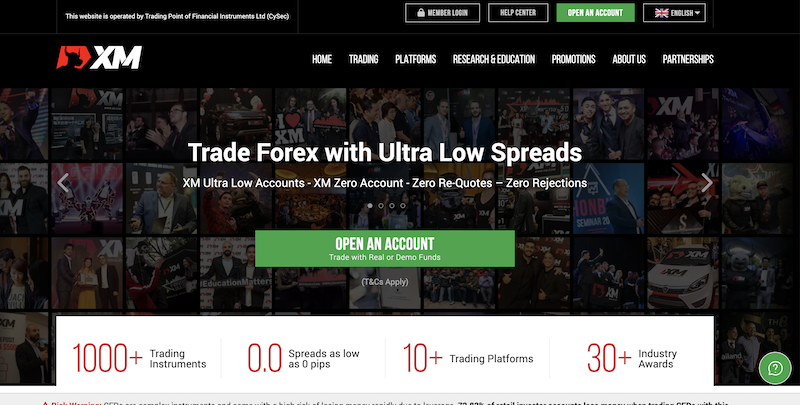For aspiring CFD traders, navigating the multitude of online brokers can be overwhelming. Two prominent names, Tickmill and XM Trading, often grab attention with their diverse offerings and competitive features. But which one emerges as the ideal platform for your specific trading needs? Buckle up as we dissect both brokers across crucial aspects, helping you make an informed decision.
Trading Instruments
Tickmill boasts wider instrument variety including crypto, while XM excels in forex, indices, commodities & stocks.
- Tickmill: Provides a wider range, encompassing forex, indices, stocks, commodities, and even cryptocurrencies.
- XM: Offers a comprehensive selection of forex, indices, commodities, and stocks, but lacks cryptocurrencies.
Account Types
Tickmill offers wider account variety for all experience levels, while XM caters more to beginners with Standard & Micro accounts.
- Tickmill: Boasts more diverse account types, including Classic, Pro, VIP, and Islamic accounts, catering to different experience levels and trading styles.
- XM: Offers Micro, Standard, Zero-Spread, and Islamic accounts, with fewer options for advanced traders.
Tickmill vs XM Trading Trading Spreads and Commissions
Tickmill edges in tighter forex spreads, but XM offers commission-free options for specific accounts and instruments.
- Tickmill: Offers tighter spreads on major forex pairs, with commissions charged only on Pro and VIP accounts.
- XM: Spreads on major forex pairs are slightly higher, but they boast commission-free trading on specific accounts and instruments.
Tickmill vs XM Trading Platforms
Both offer MT4 & 5, but Tickmill has advanced features & XM offers web-based trading.
- Tickmill: Primarily utilizes MetaTrader 4 and 5, industry-standard platforms with advanced features and customization options.
- XM: Also offers MetaTrader 4 and 5, along with their proprietary WebTrader platform for browser-based trading.
Regulation
Tickmill & XM hold licenses from top financial authorities, ensuring trust & security.
- Tickmill: Holds licenses from reputable authorities like the FCA and FSA.
- XM: Holds licenses from CySEC, FCA, and ASIC, demonstrating strong regulatory compliance.
Additional Features
Tickmill focuses on education & support, while XM offers multilingual help & rewards.
- Tickmill: Provides educational resources, dedicated customer support, and negative balance protection.
- XM Trading: Offers educational resources, multilingual support, and a loyalty program.
So, who wins?

Tickmill excels for
- Traders seeking wider instrument variety.
- Experienced traders requiring advanced account features and lower spreads.
- Those prioritizing tighter spreads and lower commissions.

XM Trading Shines For
- Beginners attracted to simplicity and commission-free accounts.
- Traders valuing multilingual support and a loyalty program.
- Those primarily focused on forex trading.
Ultimately, the “winner” depends on your individual priorities. Consider your:
- Trading experience: Novice traders might find XM’s simplicity appealing, while experienced traders may favor Tickmill’s advanced features.
- Trading style: If you trade frequently, Tickmill’s lower commissions might be more beneficial.
- Desired instruments: For crypto enthusiasts, Tickmill is the only option.
Remember
This is not financial advice. Do your own research, compare fees, and understand the risks involved before trading CFDs. OnlineTrading.wiki remains neutral, striving to provide objective information to empower your trading journey.

